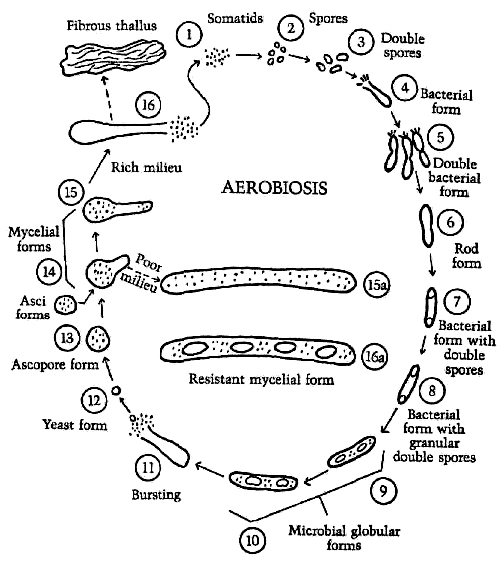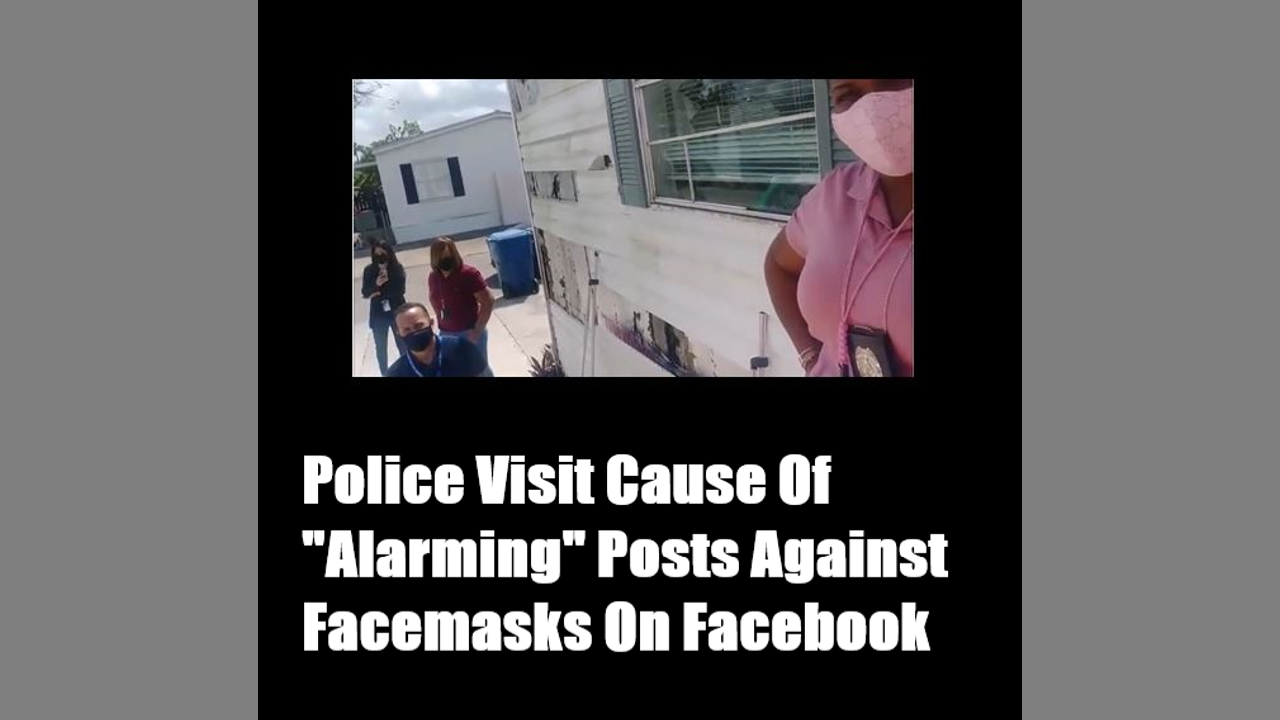Open main menu button
REMINDER: THE ARENA PLATFORM, INC. has no obligation to monitor the Forums. However, THE ARENA PLATFORM, INC. reserves the right to review any materials submitted to or posted on the Forums, and remove, delete, redact or otherwise modify such materials, in its sole discretion and for any reason whatsoever, at any time and from time to time, without notice or further obligation to you. THE ARENA PLATFORM, INC. has no obligation to display or post any materials provided by you. THE ARENA PLATFORM, INC. reserves the right to disclose, at any time and from time to time, any information or materials that we deem necessary or appropriate to satisfy any applicable law, regulation, contract obligation, legal or dispute process or government request. Click on the following hyperlinks to further read the applicable Privacy Policy and Terms of Use.
*** Official Corona Virus Thread ***
- Thread starter Planet_Erff
- Start date
Mechanical engineer who believes the earth is flatI'm trained as a Mechanical Engineer.....BSME....
But had no problem at all understanding how the PCR "test" is being used....deceptively.
That’s gotta be unique, no?
Unfortunately probably not.Mechanical engineer who believes the earth is flat
That’s gotta be unique, no?
I had a landlord who used to work at NASA, and he could never fix stuff at the apt right.Mechanical engineer who believes the earth is flat
That’s gotta be unique, no?
I was like, "Now I know why the Challenger blew up."
How about the work of this guy?
Ever heard of him before?
One word....Somatid....learn something new today...
Ever heard of him before?
The Persecution and Trial of Gaston Naessens: The True Story of the Efforts to Suppress an Alternative Treatment for Cancer, AIDS, and Other Immunologically Based Diseases: Bird, Christopher: 9780915811304: Amazon.com: Books
The Persecution and Trial of Gaston Naessens: The True Story of the Efforts to Suppress an Alternative Treatment for Cancer, AIDS, and Other Immunologically Based Diseases [Bird, Christopher] on Amazon.com. *FREE* shipping on qualifying offers. The Persecution and Trial of Gaston Naessens: The...
www.amazon.com
The Life and Trials of Gaston Naessens: The Galileo of the Microscope: Christopher Bird: 9782921138024: Amazon.com: Books
The Life and Trials of Gaston Naessens: The Galileo of the Microscope [Christopher Bird] on Amazon.com. *FREE* shipping on qualifying offers. The Life and Trials of Gaston Naessens: The Galileo of the Microscope
www.amazon.com
One word....Somatid....learn something new today...
Last edited:

Fanciful Claims for 714X | Quackwatch
714X -- also called "trimethylbicyclonitramineoheptane chloride" -- was developed by Gaston Naessens, a native Frenchman who has lived and worked ...
He has repeatedly lied about his education and was convicted of practicing medicine without a license. The problems go on from there.
Quack quack quack.
Of course he's a "quack" because he did not ascribe to the Rockefeller Medicine cult....Big Pharma.
But his work is what we're talking about here, right?
Pretty damn interesting stuff....
For example.....the cycle of the life of a cell (shape shiftiers)....and Somatids.....

Excerpt from the above....
"Even stranger, over the years the somatids were revealed to be virtually indestructible! They have resisted exposure to carbonization temperatures of 200°C and more. They have survived exposure to 50,000 rems of nuclear radiation, far more than enough to kill any living thing. They have been totally unaffected by any acid. Taken from centrifuge residues, they have been found impossible to cut with a diamond knife, so unbelievably impervious to any such attempts is their hardness.
The eerie implication is that the new minuscule life forms revealed by Naessens's microscope are imperishable. At the death of their hosts, such as ourselves, they return to the earth, where they live on for thousands or millions, perhaps billions, of years!
This conclusion—mind-boggling on the face of it—is not one that sprang full-blown from Naessens mind alone. A few years ago, I came across a fascinating doctoral dissertation, published as a book, authored by a pharmacist living in France named Marie Nonclercq.
Several years in the writing, Nonclercq's thesis delved into a long-lost chapter in the history of science that has all but been forgotten for more than a century. This chapter concerned a violent controversy between, on the one side, the illustrious Louis Pasteur, whose name, inscribed on the lintels of research institutes all over the world, is known to all school-children, if only because of the pasteurized milk they drink.
On the other side was Pasteur's nineteenth-century contemporary and adversary, Antoine Bechamp, who first worked in Strasbourg as a professor of physics and toxicology at the Higher School of Pharmacy, later as professor of medical chemistry at the University of Montpellier, and, later still, as professor of biochemistry and dean of faculty of medicine at the University of Lille, all in France.
While laboring on problems of fermentation, the breakdown of complex molecules into organic compounds via "ferment"—one need only think of curdling milk by bacteria—Bechamp, at his microscope, far more primitive that Naessens's own instrument, seemed able to descry a host of tiny bodies in his fermenting solutions. Even before Bechamp's time, other researchers had observed, but passed off as unexplainable, what they called "scintillating corpuscles" or "molecular granulations." Bechamp, who was able to ascribe strong enzymatic (catalytic change-causing) reactions to them, was led to coin a new word to describe them: microzymas (tiny ferments).
Among these ferments' many peculiar characteristics was one showing that, whereas they did not exist in chemically pure calcium carbonate made in a laboratory under artificial conditions, they were abundantly pre-sent in natural calcium carbonate, commonly known as chalk. For this reason, the latter could, for instance, easily "invert" [ferment] cane sugar solutions, while the former could not.
With the collaboration of his son, Joseph, and Alfred Estor, a Mont-pellier physician and surgeon, Bechamp went on to study microzymas located in the bodies of animals and came to the startling conclusion that the tiny forms were far more basic to life than cells, long considered to be the basic building blocks of all living matter. Bechamp thought them to be fundamental elements responsible for the activity of cells, tissues, organs, and indeed whole living organisms, from bacteria to whales, and larks to human beings. He even found them present in life-engendering eggs, where they were responsible for the eggs' further development while themselves undergoing significant changes.
So, nearly a century before Gaston Naessens christened his somatid, his countryman, Bechamp, had come across organisms that, as Naessens immediately recognized, seem to be "cousins," however many times re-moved of his own "tiny bodies."
Most incredible to Bechamp was the fact that, when an event serious enough to affect the whole of an organism occurred, the microzymas with-in it began working to disintegrate it totally, while at the same time continuing to survive. As proof of such survival, Bechamp found these microzymas in soil, swamps, chimney soot, street dust, even air and water. These basic and apparently eternal elements of which we and all our animal relatives are composed survive the remnants of living cells in our bodies that disappear at our deaths. "
So Niesens was responsible for the technology that allowed one to observe these things.....
But....quack quack quack....
(Because it threatens the status quo of the Big Pharma big money making cult)

But his work is what we're talking about here, right?
Pretty damn interesting stuff....
For example.....the cycle of the life of a cell (shape shiftiers)....and Somatids.....

The Somatid Cycle The figure above shows the complete somatid cycle first observed by Gaston Naessens.
The somatid is a subcellular living, reproducing form which has been found to be virtually indestructible.
This illustration shows the pleomorphic (form-changing) somatid going through sixteen separate forms.
The somatid is a subcellular living, reproducing form which has been found to be virtually indestructible.
This illustration shows the pleomorphic (form-changing) somatid going through sixteen separate forms.
Excerpt from the above....
"Even stranger, over the years the somatids were revealed to be virtually indestructible! They have resisted exposure to carbonization temperatures of 200°C and more. They have survived exposure to 50,000 rems of nuclear radiation, far more than enough to kill any living thing. They have been totally unaffected by any acid. Taken from centrifuge residues, they have been found impossible to cut with a diamond knife, so unbelievably impervious to any such attempts is their hardness.
The eerie implication is that the new minuscule life forms revealed by Naessens's microscope are imperishable. At the death of their hosts, such as ourselves, they return to the earth, where they live on for thousands or millions, perhaps billions, of years!
This conclusion—mind-boggling on the face of it—is not one that sprang full-blown from Naessens mind alone. A few years ago, I came across a fascinating doctoral dissertation, published as a book, authored by a pharmacist living in France named Marie Nonclercq.
Several years in the writing, Nonclercq's thesis delved into a long-lost chapter in the history of science that has all but been forgotten for more than a century. This chapter concerned a violent controversy between, on the one side, the illustrious Louis Pasteur, whose name, inscribed on the lintels of research institutes all over the world, is known to all school-children, if only because of the pasteurized milk they drink.
On the other side was Pasteur's nineteenth-century contemporary and adversary, Antoine Bechamp, who first worked in Strasbourg as a professor of physics and toxicology at the Higher School of Pharmacy, later as professor of medical chemistry at the University of Montpellier, and, later still, as professor of biochemistry and dean of faculty of medicine at the University of Lille, all in France.
While laboring on problems of fermentation, the breakdown of complex molecules into organic compounds via "ferment"—one need only think of curdling milk by bacteria—Bechamp, at his microscope, far more primitive that Naessens's own instrument, seemed able to descry a host of tiny bodies in his fermenting solutions. Even before Bechamp's time, other researchers had observed, but passed off as unexplainable, what they called "scintillating corpuscles" or "molecular granulations." Bechamp, who was able to ascribe strong enzymatic (catalytic change-causing) reactions to them, was led to coin a new word to describe them: microzymas (tiny ferments).
Among these ferments' many peculiar characteristics was one showing that, whereas they did not exist in chemically pure calcium carbonate made in a laboratory under artificial conditions, they were abundantly pre-sent in natural calcium carbonate, commonly known as chalk. For this reason, the latter could, for instance, easily "invert" [ferment] cane sugar solutions, while the former could not.
With the collaboration of his son, Joseph, and Alfred Estor, a Mont-pellier physician and surgeon, Bechamp went on to study microzymas located in the bodies of animals and came to the startling conclusion that the tiny forms were far more basic to life than cells, long considered to be the basic building blocks of all living matter. Bechamp thought them to be fundamental elements responsible for the activity of cells, tissues, organs, and indeed whole living organisms, from bacteria to whales, and larks to human beings. He even found them present in life-engendering eggs, where they were responsible for the eggs' further development while themselves undergoing significant changes.
So, nearly a century before Gaston Naessens christened his somatid, his countryman, Bechamp, had come across organisms that, as Naessens immediately recognized, seem to be "cousins," however many times re-moved of his own "tiny bodies."
Most incredible to Bechamp was the fact that, when an event serious enough to affect the whole of an organism occurred, the microzymas with-in it began working to disintegrate it totally, while at the same time continuing to survive. As proof of such survival, Bechamp found these microzymas in soil, swamps, chimney soot, street dust, even air and water. These basic and apparently eternal elements of which we and all our animal relatives are composed survive the remnants of living cells in our bodies that disappear at our deaths. "
So Niesens was responsible for the technology that allowed one to observe these things.....
But....quack quack quack....
(Because it threatens the status quo of the Big Pharma big money making cult)

Trailer Park Dude.....nails it....in front of a gaggle of FLA Police workers....
We're from the police and we're here to help.....

 www.brighteon.com
www.brighteon.com
His website.....full of "alternative" info......
We're from the police and we're here to help.....


Police Visit Cause Of "Alarming" Posts Against Facemasks On Facebook
Brighteon.com is a leading online free platform that empowers free speech, allowing individuals to freely share videos and express their thoughts without any form of censorship. Join us today and be part of our community.
His website.....full of "alternative" info......
Why not "exposure" to SARs-CoV-2 virus, Auto?He should ingest some ebola tainted blood?
He could blow the cover off the entire scam.
That is what I don't get.
So easy but no.
It's much scarier vs. Ebola, right?
I mean....the whole world has been affected.....lockdowns.....face masks......
For Ebola....no so much....
Based on that....Ebola < Covid-19.....right?
Ebola has a high fatality rate but it's doesn't spread easily. You need the victim to throw up blood on you.Why not "exposure" to SARs-CoV-2 virus, Auto?
It's much scarier vs. Ebola, right?
I mean....the whole world has been affected.....lockdowns.....face masks......
For Ebola....no so much....
Based on that....Ebola < Covid-19.....right?
So disproving germ theory would be more dramatic with ebola.
Covid lower but it spreads easy to find it's weak victims.
You only need a low relatively low death rate to collapse the health care system and you can't have "freedumb" without a functioning health care system.
So are you up for some Ebola?
er....ah.....about those masks.....

 www.ncbi.nlm.nih.gov
www.ncbi.nlm.nih.gov

 americanconservativemovement.com
americanconservativemovement.com
Two years ago Germaphobia was considered a mental condition....
And now we know.....the whole world has gone crazy....
And then there's this....

 www.walesonline.co.uk
www.walesonline.co.uk
"Most people hospitalised in the third wave are expected to have received two doses of a vaccine"
Huh...what?!

Facemasks in the COVID-19 era: A health hypothesis
Many countries across the globe utilized medical and non-medical facemasks as non-pharmaceutical intervention for reducing the transmission and infectivity of coronavirus disease-2019 (COVID-19). Although, scientific evidence supporting facemasks’ ...

Study Quietly Published at NIH.Gov Proves Face Masks Are Absolutely Worthless Against Covid [Updated]
Article originally published at American Conservative Movement and transferred here for posterity. Update: Stanford University has disavowed the study, saying
Two years ago Germaphobia was considered a mental condition....
And now we know.....the whole world has gone crazy....
And then there's this....

Detailed projection of third coronavirus spike as restrictions are lifted
Most people hospitalised in the third wave are expected to have received two doses of a vaccine
"Most people hospitalised in the third wave are expected to have received two doses of a vaccine"
Huh...what?!
Last edited:
Did the people who did the study believe in germ theory?er....ah.....about those masks.....

Facemasks in the COVID-19 era: A health hypothesis
Many countries across the globe utilized medical and non-medical facemasks as non-pharmaceutical intervention for reducing the transmission and infectivity of coronavirus disease-2019 (COVID-19). Although, scientific evidence supporting facemasks’ ...www.ncbi.nlm.nih.gov

Study Quietly Published at NIH.Gov Proves Face Masks Are Absolutely Worthless Against Covid [Updated]
Article originally published at American Conservative Movement and transferred here for posterity. Update: Stanford University has disavowed the study, sayingamericanconservativemovement.com
Two years ago Germaphobia was considered a mental condition....
And now we know.....the whole world has gone crazy....
And then there's this....

Detailed projection of third coronavirus spike as restrictions are lifted
Most people hospitalised in the third wave are expected to have received two doses of a vaccinewww.walesonline.co.uk
"Most people hospitalised in the third wave are expected to have received two doses of a vaccine"
Huh...what?!
makes me feel like a bank robber.I like wearing a mask. Makes me feel like a Ninja.
you know exactly what point he is making, ignore it, and present a red herringSo old that this research continues today.....

just like Gerson and a thousand other quacks before...Of course he's a "quack" because he did not ascribe to the Rockefeller Medicine cult....Big Pharma.
But his work is what we're talking about here, right?
Pretty damn interesting stuff....
For example.....the cycle of the life of a cell (shape shiftiers)....and Somatids.....

The Somatid Cycle The figure above shows the complete somatid cycle first observed by Gaston Naessens.
The somatid is a subcellular living, reproducing form which has been found to be virtually indestructible.
This illustration shows the pleomorphic (form-changing) somatid going through sixteen separate forms.
Excerpt from the above....
"Even stranger, over the years the somatids were revealed to be virtually indestructible! They have resisted exposure to carbonization temperatures of 200°C and more. They have survived exposure to 50,000 rems of nuclear radiation, far more than enough to kill any living thing. They have been totally unaffected by any acid. Taken from centrifuge residues, they have been found impossible to cut with a diamond knife, so unbelievably impervious to any such attempts is their hardness.
The eerie implication is that the new minuscule life forms revealed by Naessens's microscope are imperishable. At the death of their hosts, such as ourselves, they return to the earth, where they live on for thousands or millions, perhaps billions, of years!
This conclusion—mind-boggling on the face of it—is not one that sprang full-blown from Naessens mind alone. A few years ago, I came across a fascinating doctoral dissertation, published as a book, authored by a pharmacist living in France named Marie Nonclercq.
Several years in the writing, Nonclercq's thesis delved into a long-lost chapter in the history of science that has all but been forgotten for more than a century. This chapter concerned a violent controversy between, on the one side, the illustrious Louis Pasteur, whose name, inscribed on the lintels of research institutes all over the world, is known to all school-children, if only because of the pasteurized milk they drink.
On the other side was Pasteur's nineteenth-century contemporary and adversary, Antoine Bechamp, who first worked in Strasbourg as a professor of physics and toxicology at the Higher School of Pharmacy, later as professor of medical chemistry at the University of Montpellier, and, later still, as professor of biochemistry and dean of faculty of medicine at the University of Lille, all in France.
While laboring on problems of fermentation, the breakdown of complex molecules into organic compounds via "ferment"—one need only think of curdling milk by bacteria—Bechamp, at his microscope, far more primitive that Naessens's own instrument, seemed able to descry a host of tiny bodies in his fermenting solutions. Even before Bechamp's time, other researchers had observed, but passed off as unexplainable, what they called "scintillating corpuscles" or "molecular granulations." Bechamp, who was able to ascribe strong enzymatic (catalytic change-causing) reactions to them, was led to coin a new word to describe them: microzymas (tiny ferments).
Among these ferments' many peculiar characteristics was one showing that, whereas they did not exist in chemically pure calcium carbonate made in a laboratory under artificial conditions, they were abundantly pre-sent in natural calcium carbonate, commonly known as chalk. For this reason, the latter could, for instance, easily "invert" [ferment] cane sugar solutions, while the former could not.
With the collaboration of his son, Joseph, and Alfred Estor, a Mont-pellier physician and surgeon, Bechamp went on to study microzymas located in the bodies of animals and came to the startling conclusion that the tiny forms were far more basic to life than cells, long considered to be the basic building blocks of all living matter. Bechamp thought them to be fundamental elements responsible for the activity of cells, tissues, organs, and indeed whole living organisms, from bacteria to whales, and larks to human beings. He even found them present in life-engendering eggs, where they were responsible for the eggs' further development while themselves undergoing significant changes.
So, nearly a century before Gaston Naessens christened his somatid, his countryman, Bechamp, had come across organisms that, as Naessens immediately recognized, seem to be "cousins," however many times re-moved of his own "tiny bodies."
Most incredible to Bechamp was the fact that, when an event serious enough to affect the whole of an organism occurred, the microzymas with-in it began working to disintegrate it totally, while at the same time continuing to survive. As proof of such survival, Bechamp found these microzymas in soil, swamps, chimney soot, street dust, even air and water. These basic and apparently eternal elements of which we and all our animal relatives are composed survive the remnants of living cells in our bodies that disappear at our deaths. "
So Niesens was responsible for the technology that allowed one to observe these things.....
But....quack quack quack....
(Because it threatens the status quo of the Big Pharma big money making cult)

labelling something "banned" is just another monetization ploy
in this case, it prays on the fear and ignorance of an audience in search of hope
sad
There's about a 10x absolute risk reduction of portal vein thrombosis due to mRNA vaccines:So the above graphic is just an example to help the reader understand the difference between ARR and RRR.
Roger that. Understood.
Here's the actual numbers from the trial. Interesting. I can see why they decided to not include ARR in the FDA approval process or communicating risk to the public. Who wants to get injected with a drug for which we have no long-term safety data if it only has a .007 chance of actually preventing an infection in an individual!
View attachment 107947
PS - I didn't watch the video. I can absorb information *much* faster by reading text so I spent my time reading the PDF from the study and gave the video a skip.
PPS - If I was going to watch a video, I think it would be something along the lines of learning how to speak Mandarin.

COVID-19 and cerebral venous thrombosis: a retrospective cohort study of 513,284 confirmed COVID-19 cases
Hosted on the Open Science Framework
osf.io
This seems like it's definitely worth getting if you're older or an another high-risk category.
They need more study on the effects of these vaccines on women. The side-effects seem to mostly affect women.